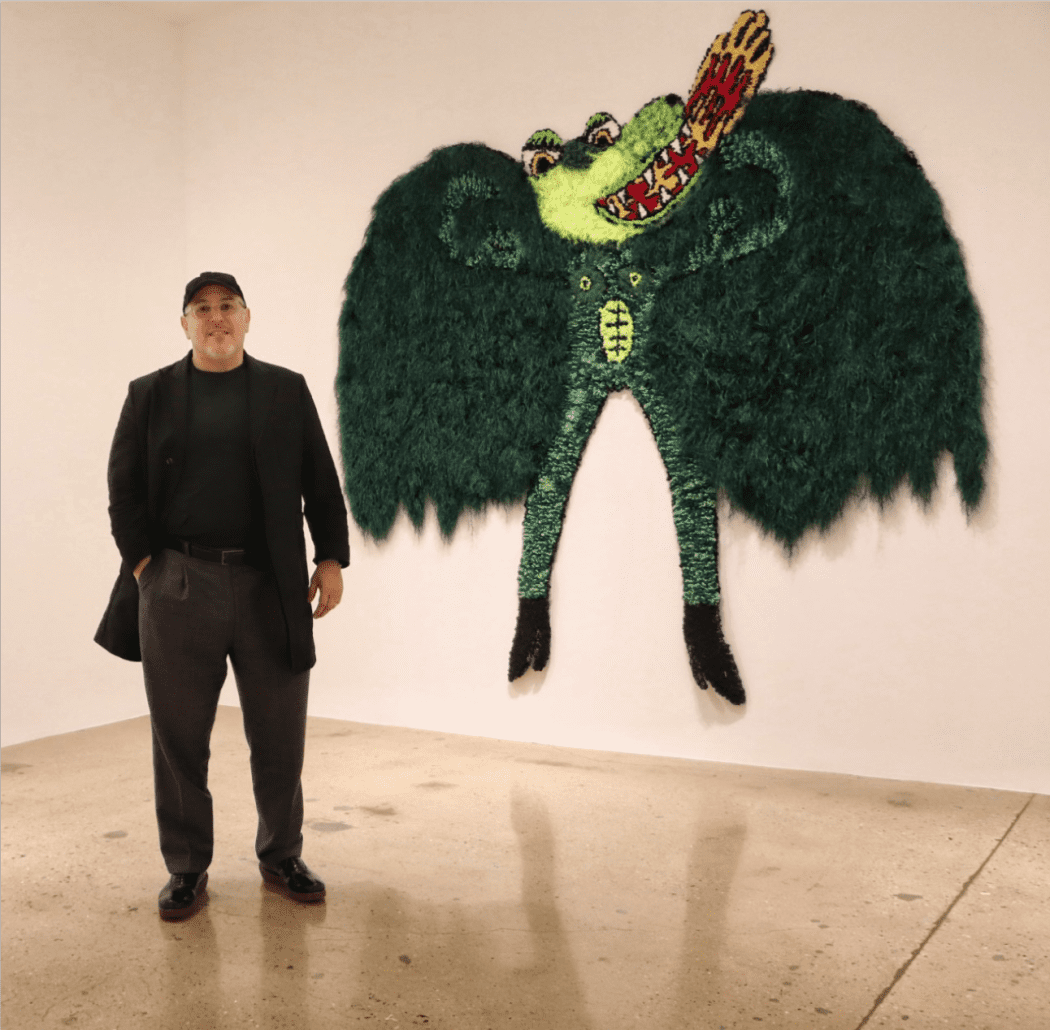As museums all over the country aim to embrace diversity, equity and inclusion it’s hard to mistake the shake-up of art history upon us. Emblematic of this revision, Steve Turner fosters the next generation of contemporary artists in his Los Angeles gallery.
“I’m drawn to the underdog, the less represented. I’m drawn to artists that are overlooked by history. I like knowing what other people don’t know. I like knowing what isn’t common knowledge and then introducing it to a broader audience,” Turner said.
We sat down with Turner himself to uncover why he believes cultural diversity is imperative to a gallery’s identity and learn more about his efforts to nurture fresh, often underrepresented, talent.
Q: You’ve been in the game for over 30 years. How did this all start? Tell us about how the Steve Turner Gallery came to be?
A: I have been a collector of things since I was very young. Stamps and baseball cards were first. That led to other collecting interests which led to collecting art when I was in my twenties. The gallery was a natural consequence because it enabled me to devote my life to something that greatly inspired me–the pursuit of the great object.
Q: What is your mission?
A: To contribute to art history.
Q: What inspires you?
A: Beauty, rarity, challenge.
Q: How does your art selection process work? Are you open to submission?
A: Massive amounts of intelligent research, conversations, studio visits. I am not philosophically opposed to getting submissions, but based on my experience, it is not the best use of my time. I find artists more than they find me.
Q: You have worked with artists from over 17 different countries. What aspects of cultural diversity do you believe these artists bring into your gallery?
A: Though we live in a more connected world today because of the internet, cultural diversity is still very exciting to me. For example, I will introduce the work of Siro Cugusi, an artist who grew up and lives in the mountain highlands of Sardinia. His work is profoundly affected by this and I am excited to share his paintings with curious, educated and experienced art collectors. His experiences and distinct and that contributes to the distinctiveness of his work. Later in the year, I will introduce the work of Shirley Villavicencio Pizango, an artist from Lima who now lives in Ghent. Her biography and artwork is likewise distinct and that very much motivates me as a gallerist. It would be boring to only show MFA artists working in Los Angeles and Brooklyn and it would not reflect some of the most interesting trends in the art world.

Q: Your incubation process has helped propel the careers of many young artists. Can you walk us through this process?
A: Lots of looking. Lots of talking. Lots of thinking. No matter what one is evaluating, whether rare books, vintage cars, Navajo blankets or tin toys, one must see a lot. Smart judgments be only be made if the eligible pool of candidates is sufficiently large. Beyond seeing a lot, one must have a good eye. In some respects, this is innate, but it still must be exercised and trained by experience.
Q: What is the common thread amongst your emerging talent? What makes these artists stand out to you and how do you know they have what it takes?
A: In reverse order, I never know if they have what it takes to succeed when we start. I only can guess at that and hope that they do. A strong work ethic, the ability to evolve and to be strong in the face of criticism and disappointment are necessary attributes always. To start though, I look for a range of attributes. Artists that stand out as interesting are highly unusual people. They typically have highly distinct backgrounds, rare natural talent, unusual and deep interests, high intelligence and a strong ambition to share their work with a broader public.
Q: Do you have a favorite exhibit that you have showcased?
A: Too many to narrow it down. We have done so many great shows. I love them when they go up and am sad when they come down.
Q: How has the Steve Turner Gallery evolved over the years?
A: As society and technology have evolved, so has the gallery. In the beginning, we just mailed out postcards to announce our shows and waited for collectors to visit. Now we update our website every day. We have an active Instagram account and present works on Artsy, Artland and Artspace. We have live-streamed exhibitions and participate at art fairs around the world. Our physical space is larger and we have more staff. We love the new challenges and embrace change.
Q: As we embark on a new decade, what’s next for the Steve Turner Gallery?
A: Continued support of our existing artists; more new artists; more Internet activity, travel to new destinations (Africa and Asia) in search of new collectors and artists
Q: What is on view now?
A: We have two shows in the gallery now, both by young British artists. The main room show is called “The Garden of England” and it is the American debut for Jesse Pollock. It features oversized cider jugs, a twelve-foot ladder and tools used in the historic fruit growing industry in Pollock’s native Kent, England. Everything is made of steel that has been folded, welded and painted in bright colors. The objects are folky and fanciful with welded surface drawings that depict horses, starlings, scorpions, stars and horseshoes. The show just opened but the reaction has been very enthusiastic so far.
The second exhibition is “Hospitality” and it is the American debut for Lydia Blakeley. It features paintings that depict scenes from horse races in Great Britain. They include the characters one might see at these events including the security guards and sniffer dogs who are stationed at the entrance; waiters in the hospitality tent; and tipsy patrons, some of whom have passed out. As a group, they capture tabloid images of moments of enjoyment, distraction and oblivion. It too has been very well received.
“The Garden of England” by Jesse Pollock and “Hospitality” by Lydia Blakeley are both on view through February 8, 2020. Visit http://www.steveturner.la/ to see more images.





